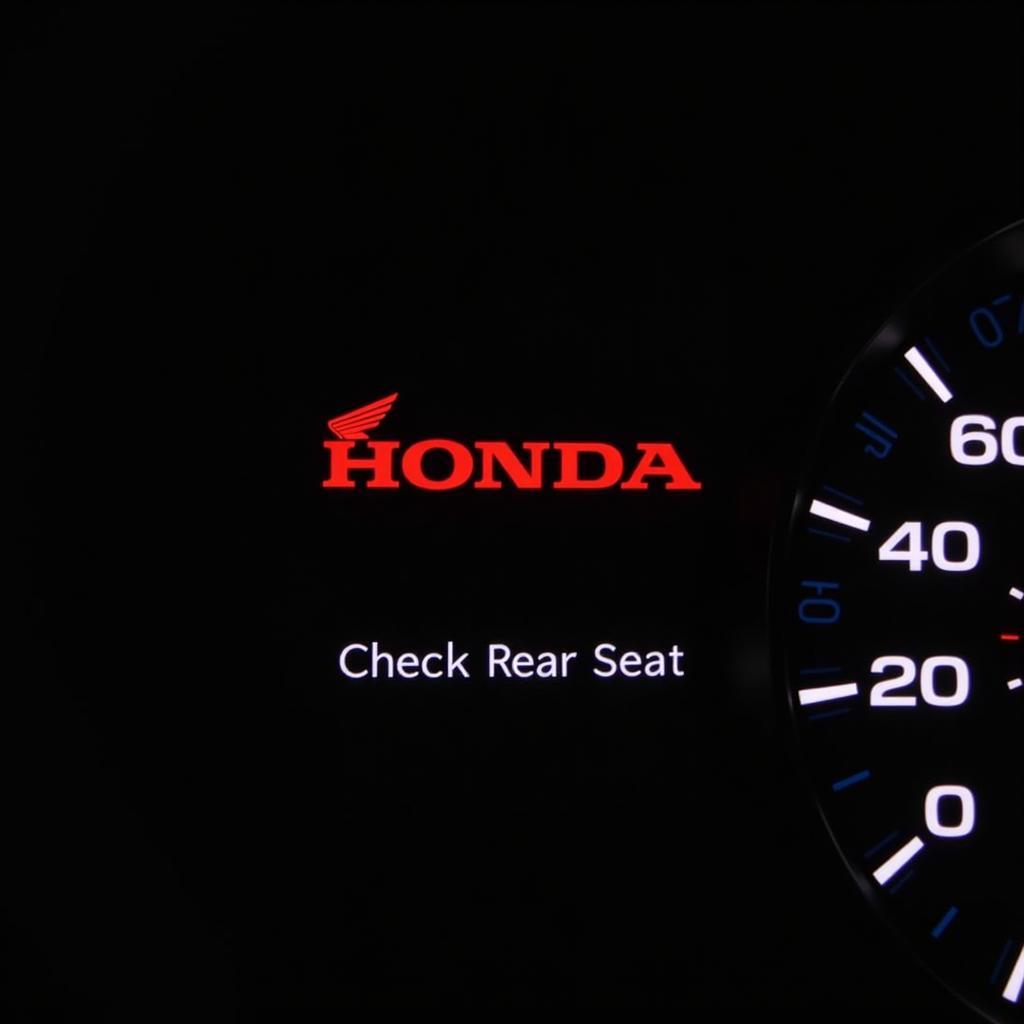The brake warning light on your 2013 Ford F150 is a crucial safety feature, illuminating when the vehicle’s onboard computer detects a problem within the braking system. While a simple issue like a disengaged parking brake can trigger the light, it could also signify something more serious. This comprehensive guide delves into the common causes behind a 2013 Ford F150 brake warning light and provides practical solutions to help you regain control of your truck’s safety.
Understanding Your F150’s Brake System
Before diving into the potential culprits, it’s helpful to understand the basics of your F150’s braking system. This system relies on several key components working in harmony:
- Hydraulic System: This system uses brake fluid to transmit force from the brake pedal to the calipers, which squeeze the brake pads against the rotors, slowing down the truck.
- Anti-lock Braking System (ABS): Designed to prevent wheel lock-up during hard braking, the ABS system helps maintain steering control and reduce stopping distances.
- Electronic Brakeforce Distribution (EBD): Working in conjunction with the ABS, EBD optimizes braking force to each wheel based on factors like vehicle load and road conditions.
- Parking Brake: This mechanical system uses cables to engage the rear brakes, keeping the vehicle stationary when parked.
Common Causes of a 2013 Ford F150 Brake Warning Light
Several factors can trigger the brake warning light on your 2013 Ford F150. Here are some of the most common culprits:
1. Low Brake Fluid Level
Low brake fluid is a primary cause of an illuminated brake warning light. When the brake fluid level drops below a certain point, it can compromise the hydraulic pressure needed for effective braking.
Possible Causes:
- Leaking brake lines, hoses, or calipers
- Worn-out brake pads
Solution:
- Check the brake fluid level: Open the hood and locate the brake fluid reservoir. The reservoir will have a “MIN” and “MAX” marking. If the fluid level is below the “MIN” mark, add the recommended brake fluid type for your 2013 F150.
- Inspect for leaks: Check the brake lines, hoses, and calipers for any signs of leaks, such as wetness or fluid dripping. If you detect a leak, it’s crucial to address it immediately.
- Consider brake pad replacement: Worn brake pads can also lead to low brake fluid levels. If your pads are nearing the end of their lifespan, it’s time for a replacement.
2. Engaged Parking Brake
A seemingly simple oversight, an engaged parking brake can also illuminate the warning light.
Solution:
- Disengage the parking brake: Ensure the parking brake is fully released. You might feel a slight release or hear a clicking sound as you disengage it.
3. Faulty ABS Sensor
The ABS sensors monitor the speed of each wheel and relay this information to the vehicle’s computer. A malfunctioning ABS sensor can disrupt this communication, triggering the brake warning light.
Possible Causes:
- Damaged or corroded sensor
- Broken sensor wiring
Solution:
- Diagnose with a scanner: A professional-grade diagnostic scanner can pinpoint the faulty ABS sensor.
- Replace the sensor: Replacing an ABS sensor often requires specialized tools and knowledge of the braking system. Consider seeking assistance from a qualified mechanic.
4. Worn Brake Pads
As brake pads wear down, they can trigger the brake warning light. This is often accompanied by a screeching sound when applying the brakes.
Solution:
- Inspect brake pad thickness: Check the brake pad thickness through the wheel. If the pads are thin or you notice a significant difference in thickness between the inner and outer pads, it’s time for a replacement.
- Replace brake pads: Consider replacing your brake pads at a trusted repair shop.
When to Seek Professional Help
While some brake warning light issues can be addressed with DIY solutions, it’s crucial to consult a qualified mechanic if:
- The warning light remains illuminated after addressing the common causes.
- You experience unusual braking behavior, such as spongy brakes, pulling to one side, or grinding noises.
- You’re uncomfortable working on your vehicle’s braking system.
FAQs: 2013 Ford F150 Brake Warning Light
Q: Is it safe to drive with the brake warning light on?
A: Driving with an illuminated brake warning light is potentially dangerous. It indicates a problem with your braking system that requires immediate attention.
Q: How much does it cost to fix a brake warning light on a 2013 Ford F150?
A: The cost can vary significantly depending on the underlying cause, ranging from a few dollars for brake fluid to hundreds for ABS sensor replacement.
Q: Can I reset the brake warning light myself?
A: While disconnecting the battery might temporarily reset the light, it’s crucial to address the root cause.
Conclusion
Addressing a brake warning light on your 2013 Ford F150 is essential for maintaining safe driving conditions. By understanding the common causes and solutions outlined in this guide, you can confidently troubleshoot the issue or seek professional help when needed. Remember, a properly functioning braking system is paramount for your safety and the safety of others on the road.

